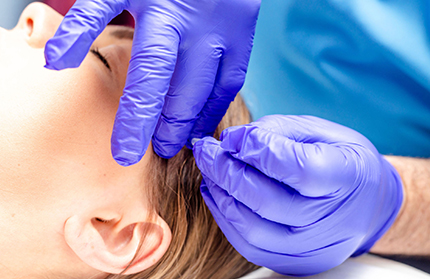WHAT IS EHLERS-DANLOS SYNDROME?
Common Symptoms of EDS
What Problems Does EDS Cause?
What Treatments Are Available?
How Common Is EDS?
Is EDS New?
Is It Genetic?
Background Information
RPI Patient Recovery Stories
Here are two inspirational patient cases that we’ve encountered over the past 6 months.
1 – The pHD Student on the Road to Recovery
A 27-year-old man suffering with EDS had a 5 year history of not being able to sit down comfortably. The only positions that didn’t cause him pain were lying down or standing. This made studying for his phD incredibly difficult and frustrating, and made simple day-to-day activities a struggle.
After multiple visits to his doctor with complaints of severe pain in both his buttocks and radiating pain down one leg, believed to be as the result of joint hypermobility syndrome. This condition causes aches and pains between the joints, and makes the sufferer more likely to experience spasms. Nothing seemed to be helping with the agony, until finally, he was referred to a physical therapist.
The patient took part in a series of activities including dry needling, pelvis strengthening, wearing a brace, using orthotics in his shoes, and undertaking a special therapeutic exercise program to strengthen and re-train his body. Over time, this holistic approach developed his muscles so he could sit comfortably again, enabling him to complete his pHD and enter the world of work.
From once having to have his mother drive him to school every day, he could now drive himself to and from work, as well as walk and do other high impact activities that for years had been impossible. Thanks to physical therapy, he is now leading a normal and happy life.
2 – The Architect Who Took Back Her Life
A 30-year-old architect was suffering with agonizing back and groin pain, as well as radiating pain down her legs to the knee. After multiple meetings with pain management professionals, countless injections, MRI scans, and even surgery to explore her uterus and internal organs, she was still in a great deal of pain, and with seemingly all options exhausted. Being an architect, a lot of the daily activities she needed to do were seriously restricted.
When it seemed like there was little that could be done for her, she decided to turn to therapy. After a quick evaluation, it became clear that she had multiple hypermobile joints, which causes severe pain and stiffness in the joints and makes movement difficult. She began physical therapy, having dry needling, stabilization/energy techniques, and using a custom-made brace. She was also taught special exercises to perform at her workplace to help build and strengthen muscles surrounding the affected joint.
The architect has improved by a massive 60%, and the future is looking bright. She is now able to perform her work duties and daily activities and has taken back control of her body and her life. After another 2-3 months, she can expect to be discharged and will continue to see improvements in pain reduction and her mobility.
Healthy, happy patients are what makes it all worth it. If you’re suffering from debilitating pain or mobility problems, a course of physical therapy may be exactly what you need to get things back on track and start living your life to the fullest.


